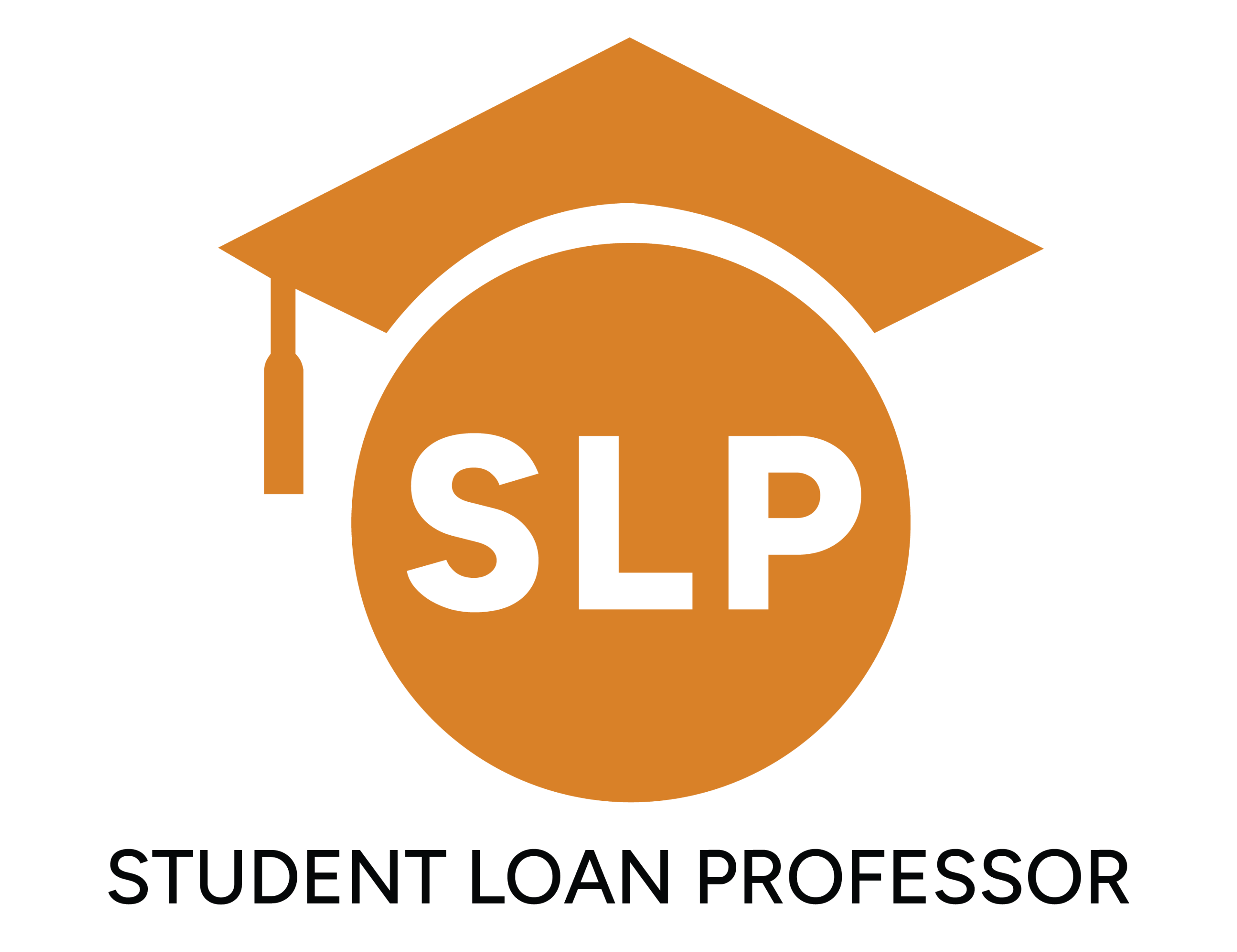Key Takeaways
- Refinancing reduces interest rates, consolidates loans, and customizes repayment terms for flexibility.
- Research lenders for competitive rates, fees, and benefits like autopay discounts.
- Strong credit, low debt-to-income ratio, and stable income improve refinancing eligibility.
- Refinancing sacrifices federal protections like PSLF and income-driven repayment plans.
Refinancing your federal student loans can simplify repayment, lower your interest rates, and save you money over time. With the recent Fed rate cut creating historically low refinance rates, now might be the perfect time to explore this option.
Let’s take a closer look at everything you need to know about federal student loan refinancing, from how it works to whether it’s the right move for your financial goals.
What Is Federal Student Loan Refinancing?
Federal student loan refinancing allows borrowers to replace one or more federal loans with a new private loan under different terms.
The primary goal is to lower the interest rate, reduce monthly payments, or streamline repayment by consolidating multiple loans.
For example, refinancing at a lower interest rate over the same loan term could save you thousands of dollars over the life of the loan, depending on your initial loan terms and the new rate offered.
Refinancing can also help you customize your loan terms to prioritize flexibility.
For example, if you decide to change the terms to 20 years instead of 10, you’ll end up paying more interest overall, but you’ll have smaller monthly payments, which can help in times of low income.
How Does Refinancing Federal Student Loans Work?
1. Research and Compare Lenders
The first step in refinancing federal student loans is researching and comparing private lenders. You should evaluate lenders based on several factors, such as:
- Interest Rates: Look for lenders offering competitive options. Fixed rates provide stability, while variable rates may initially be lower but can fluctuate over time.
- Loan Terms: Terms typically range from 5 to 20 years. Shorter terms often come with higher monthly payments but lower overall interest, while longer terms reduce monthly payments but increase total repayment costs.
- Fees: Be mindful of origination fees, late payment penalties, or prepayment charges. Many reputable lenders eliminate these fees.
- Benefits: Some lenders offer perks like autopay discounts, deferment options, or financial hardship programs, which can make repayment more manageable.
Platforms like Student Loan Professor simplify the refinancing process by providing easy access to multiple lenders for comparison. This allows you to efficiently compare rates, terms, and features without visiting each lender individually.
Many of these lenders also have unique discounts and offers exclusively for Student Loan Professor’s clients.
2. Prequalify and Check Eligibility
After identifying potential lenders, you’ll need to prequalify to determine your eligibility and get an idea of the interest rates you might receive.
Most private lenders offer a prequalification process that involves a soft credit inquiry, which does not affect your credit score.
Prequalification provides you with estimated rates and terms, helping you compare offers without committing to a specific lender.
During this step, lenders typically evaluate the following:
- Credit Score: A strong credit score (usually 700 or higher) can help secure the lowest rates.
- Debt-to-Income (DTI) Ratio: Lenders assess your monthly debt obligations compared to your income. A lower DTI indicates better financial stability and increases approval chances.
- Income Verification: Stable income reassures lenders that you’ll be able to make consistent payments after refinancing student loans.
3. Gather Documentation
After prequalifying and choosing a lender, you’ll need to provide documentation to complete the formal application. This step is where the lender goes over all the necessary information to verify your financial profile and process your application.
You’ll be asked to provide several documents, such as:
- Government-issued ID: This includes a driver’s license or passport to verify your identity.
- Proof of Income: This can include recent pay stubs, tax returns, or bank statements.
- Loan Account Details: Including loan balances, interest rates, and current servicer information.
4. Submit a Formal Application
The next step is to submit a formal application, which involves a hard credit check. Unlike the soft inquiry used during prequalification, a hard inquiry may temporarily lower your credit score by a few points.
The impact is usually minor and temporary, but applying to multiple lenders at once can significantly reduce your score.
When filling out your application, you’ll need to provide additional details about your financial situation, including employment history and any assets. You’ll also need to disclose any other federal or private student loans.
Most lenders have a fully online application process, making it quick and convenient.
5. Review and Sign Loan Terms
After your application is reviewed, the lender will provide you with the loan terms. This is a crucial step, and you should carefully review all the terms of the loan to make sure they suit your financial situation.
The loan terms will usually include:
- Interest Rate: Ensure it matches the rates quoted during prequalification.
- Repayment Term: Ensure that the monthly payment and the repayment period align with your financial goals.
- Fees: Look for hidden fees, such as late payment penalties or prepayment charges.
6. Loan Disbursement
Once you accept the terms and sign the loan agreement, the private lender will disburse the funds. This means they will pay off your existing federal student loans directly to the previous lender, which is known as student loan consolidation.
At this point, your refinanced private student loan officially replaces your federal loans.
Pros and Cons of Refinancing Federal Student Loans
Pros
- Lower Interest Rates: Refinancing allows borrowers with solid credit profiles to secure significantly lower interest rates than those offered by federal loans.
- Customizable Loan Terms: Borrowers can choose repayment periods ranging from 5 to 20 years.
- Consolidation of Loans: Combining multiple loans into a single payment simplifies loan management and reduces the risk of missed payments, particularly for borrowers juggling multiple federal or private student loans.
- Autopay Discounts: Many private lenders offer interest rate discounts (typically 0.25%) for setting up automatic student loan payments, further lowering the overall loan cost.
- Cosigner Release Options: Borrowers who meet specific eligibility criteria can refinance to remove a cosigner from their loan, offering financial independence.
- Potential for Savings: For borrowers with high-interest loans, refinancing can significantly reduce the total cost of repayment.
Cons
- Loss of Federal Protections: Refinancing eliminates access to benefits such as Public Service Loan Forgiveness (PSLF), income-driven repayment plans, and generous deferment or forbearance options.
- No Access to Future Relief Programs: Borrowers refinancing federal loans forfeit eligibility for federal relief initiatives, such as payment pauses or forgiveness programs.
- No Subsidized Interest: Federal subsidized loans do not accrue interest during deferment, a benefit lost when refinancing with a private lender.
- Higher Long-Term Costs: Extending the loan term to reduce monthly payments can increase the total amount of interest paid over time, making the loan more expensive in the long run.
- Credit Score Requirements: Most lenders require a strong credit score (typically 700 or higher) to qualify for the best rates on private loans. If you have a lower credit score, you might not see significant savings.
Eligibility Criteria for Refinancing
To qualify for refinancing federal student loans, you’ll need to meet specific requirements set by private lenders, such as:
- Credit Score: A strong credit score (usually 700 or higher) is ideal to secure the best interest rates. Some lenders may accept lower scores but at higher rates.
- Income Stability: Proof of consistent income is essential.
- Debt-to-Income (DTI) Ratio: A DTI ratio below 50% is preferred, demonstrating that your monthly student loan debt is manageable compared to your income.
- Loan Balance Requirements: Lenders typically set minimum and maximum loan amounts, often ranging from $5,000 to $500,000.
- Residency Status: Most lenders require borrowers to be U.S. citizens or permanent residents. Some lenders may allow non-citizens with qualifying visas and a co-signer.
When to Refinance Federal Student Loans
The best time to refinance your student loans depends on your financial situation and your long-term goals. Here are the best-case scenarios where you could refinance your student loan debt and benefit from better terms:
- High-Interest Federal Loans: If your federal student loans have high fixed interest rates, refinancing can significantly reduce your overall costs.
- Stable Financial Situation: If your financial situation has improved since your first loan, your credit score might have gone up, meaning you could qualify for better interest rates when you refinance.
- No Need for Federal Protection: If you don’t anticipate needing federal benefits like IDR or PSLF, refinancing could be a good option. It’s particularly useful for private-sector workers with no plans to utilize federal loan forgiveness programs.
- Simplifying Repayment: If you’re juggling multiple federal student loans and worry about missing payments, refinancing can consolidate them into a single loan.
Top Private Lenders for Refinancing
Here are some of the top-rated private lenders offering competitive rates, borrower-friendly features, and flexible terms.
Earnest
Earnest offers competitive rates and allows borrowers to customize repayment terms to suit their goals. Borrowers can also take advantage of biweekly payment options or a skip-a-payment feature for financial flexibility.
A key feature of Earnest is its ability to let you refinance your federal student loans and customize repayment terms to suit your goals. You can choose repayment durations from 5 to 20 years.
You can also opt for biweekly payment options, which can reduce the overall interest cost, or go for the skip-a-payment feature, which provides flexibility during financial difficulties.
Student Loan Professor clients also receive a 0.25% discount with Earnest for setting up AutoPay.
SoFi
SoFi offers a comprehensive suite of member benefits, including career coaching, financial planning, and unemployment protection. Members can also take advantage of exclusive perks for setting up AutoPay. This private lender offers a comprehensive suite of member benefits, including career coaching, financial planning, and unemployment protection.
SoFi clients working with Student Loan Professor also benefit from exclusive perks, including a 0.25% interest rate reduction for AutoPay.
Laurel Road
Laurel Road specializes in refinancing loans for medical professionals and healthcare workers. Borrowers can access tailored refinancing options and cash bonuses for larger loan amounts. It’s known for its specialization in refinancing loans for medical professionals and healthcare workers.
Through Student Loan Professor, clients refinancing loans over $100,000 receive a $500 cash bonus, while smaller loans qualify for a $200 bonus.
Splash Financial
Splash Financial offers refinancing solutions tailored to borrowers with large loan balances, such as medical or law school debt. Additional cash bonuses may be available for qualifying borrowers.
Student Loan Professor clients refinancing loans over $100,000 with Splash Financial receive a $500 cash bonus.
Maximize Savings with Student Loan Professor
Ready to take control of your student loans? Let the Student Loan Professor guide you through the refinancing process.
With free assistance and access to multiple lenders, we can help you find the best rates and terms tailored to your financial goals. Start exploring your refinancing options today.
Brandon Barfield is the President and Co-Founder of Student Loan Professor, and is nationally known as student loan expert for graduate health professions. Since 2011, Brandon has given hundreds of loan repayment presentations for schools, hospitals, and medical conferences across the country. With his diverse background in financial aid, financial planning and student loan advisory, Brandon has a broad understanding of the intricacies surrounding student loans, loan repayment strategies, and how they should be considered when graduates make other financial decisions.

![How Federal Student Loan Refinance Works [Step-By-Step] How Federal Student Loan Refinance Works [Step-By-Step] - Blog Header Image](https://www.studentloanprofessor.com/wp-content/uploads/2024/12/How-Federal-Student-Loan-Refinance-Works-Step-By-Step.webp)

![Our Honest Thoughts On Aidvantage Student Loans [For 2025]](https://www.studentloanprofessor.com/wp-content/uploads/2024/10/SLP_fallback_2-no-logo-400x250.jpg)

